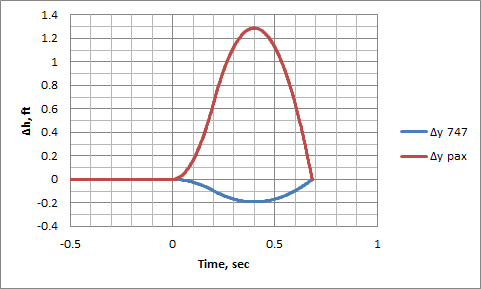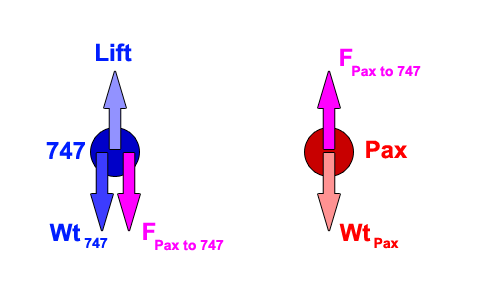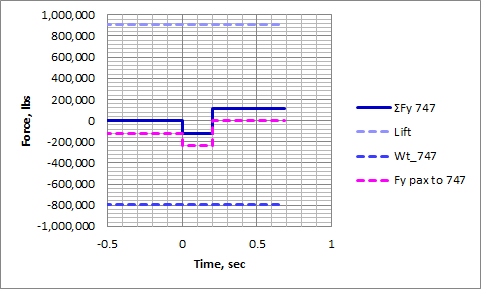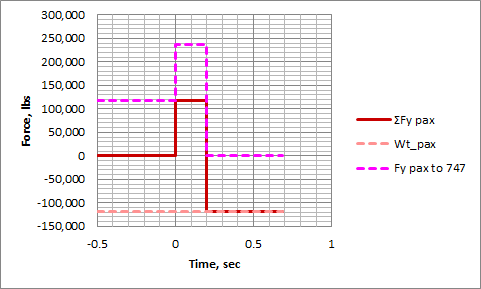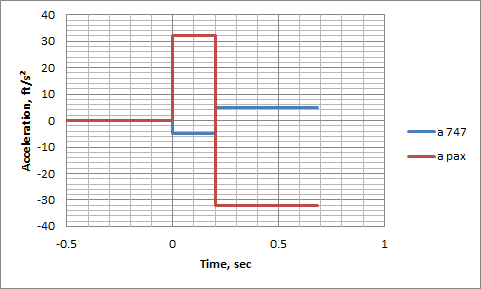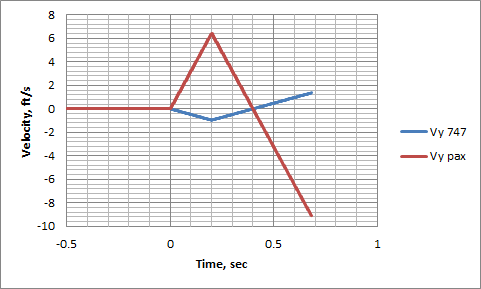In honor of Wright Brothers Day, I'm going to post an aviation-themed entry today. This entry started life as a comment on Quora, in response to a flat-earther. The most interesting aspect of the comment thread was a question the flat-earther raised that I'd never really thought about quantifying before.
If you think about the globe spinning, the equator has the highest velocity, going through one rotation per day. The poles have basically zero velocity, being just spinning about a point (from an earth-centric reference frame, at least).
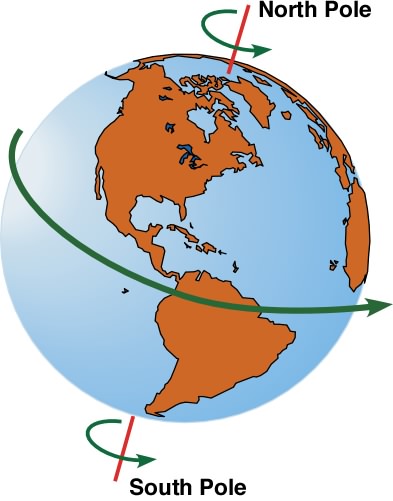
So, if an aircraft flies directly north-south (or vice versa), in order to remain over the same line of longitude, it's sideways velocity has to change - it has to accelerate sideways*. And that means there has to be a sideways force. Just from experience, you know intuitively that it's a negligible force, but can we quantify that? How much of a force are we really talking about?
The flat-earther actually proposed a good thought experiment to think about the issue. Suppose there were a giant merry-go-round, the same diameter as the Earth, spinning at the same rate of 1 rotation per day. If you started at the center of the merry-go-round, you would have zero sideways velocity. If you walked outward on a straight line painted on the merry-go-round, your sideways velocity would start to increase, keeping matched with the merry-go-round. By the time you got to the edge, your sideways velocity would be quite high - close to 1000 mph.
So, let's actually use the merry-go-round thought experiment to determine the necessary forces. The results will be at least in the right order of magnitude, and it makes the math a whole lot simpler than trying to model all this on a globe.
So, here's a diagram of the scenario. You've got a merry-go-round spinning at some rotational velocity, ω. You have an object moving outwards on that merry-go-round at some radial velocity, Vr. That object, because it's on the merry-go-round, will also have some tangential velocity, Vt.
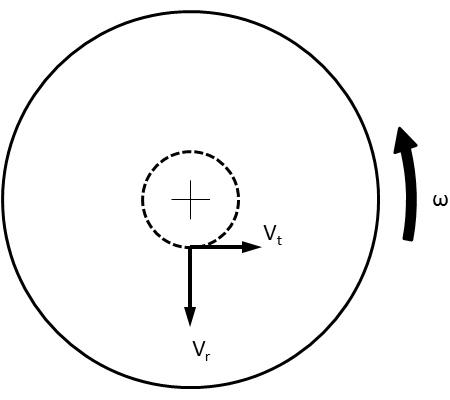
Our goal is to find tangential force, Ft, which is going to be defined by tangential acceleration, at, so we need to find changes in tangential velocity. So, let's let that object travel for some time, t. In that time, it will cover a certain radial distance, dr, which is obviously just defined by dr=Vr*t.
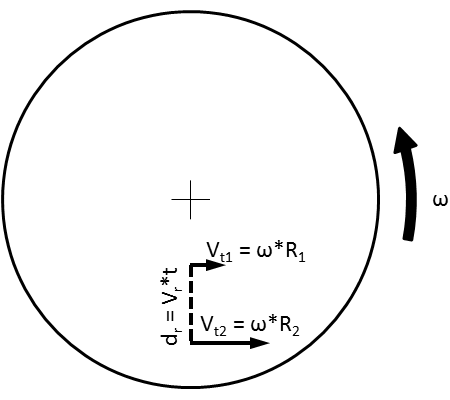
At the first point, 1, it will have a tangential velocity Vt1, where Vt1=ω*R1. And at the second point, 2, it will have a tangential velocity Vt2, where Vt2=ω*R2. Okay, I think that's got all the definitions taken care of. On to the equations:
R2 = R1 + Vr*t
ΔVt = Vt2 - Vt1
ΔVt = ω*R2 - ω*R1
ΔVt = ω*(R1+Vr*t) - ω*R1
ΔVt = ω*R1 + ω*Vr*t - ω*R1
ΔVt = ω*Vr*t
at = ΔVt/t
at = ω*Vr*t/t
at = ω*Vr
Ft = m*at
Ft = m*ω*Vr
So, things simplified quite nicely, where you don't need to worry about where exactly you are on the merry-go-round. All that matters is how fast the merry-go-round is spinning, and how fast the object is moving radially.
Let's calculate one more value, tangential load factor, nt, which is the g's the object will experience in the tangential direction, and is simply the tangential acceleration, at, divided by the regular acceleration due to gravity on Earth, g. Note that this is only dependent on speeds, not masses.
nt = at/g
nt = ω*Vr/g
Now, let's plug in some numbers, going through an example step-by-step. Let's consider a 200 lb person walking briskly at 5 mph (I'm an engineer in the U.S., so I usually stick with ft, lb, seconds, and the like). So first, rotational velocity, ω, will be one revolution per day, which works out to 6.94e-4 rpm, or 7.272e-5 rad/s. The person's mass is found by converting pounds to slugs, and since m = W/g, we get 200 lb / 32.2 ft/s² = 6.21 slugs. And their speed is 5 mph * 5280 / 3600 = 7.33 ft/s. So, we just plug those into the equations:
Ft = m*ω*Vr
Ft = (6.21 slugs)*(7.272e-5 rad/s)*(7.33 ft/s)
Ft = 0.0033 lbs
nt = ω*Vr/g
nt = (7.272e-5 rad/s)*(7.33 ft/s)/(32.2 ft/s²)
nt = 1.656e-5
To summarize, for a 200 lb person walking briskly at 5 mph, the tangential force required to accelerate them as they walk outwards is only 0.0033 lbs, or 1.656e-5 g's. That force is about equivalent to the weight of 5 staples (according to this discussion, at least). That's really, really negligible.
Let's add a few more cases, but instead of going through all the math step by step, again, let's just put the results into a table.
|
Person, 5 mph |
Car, 60 mph |
747, 570 mph |
| ω, rev/day |
1 |
1 |
1 |
| ω, rpm |
0.000694 |
0.000694 |
0.000694 |
| ω, rad/s |
7.27E-05 |
7.27E-05 |
7.27E-05 |
|
|
|
|
| Vr, mph |
5 |
60 |
570 |
| Vr, ft/s |
7.333333 |
88 |
836 |
|
|
|
| Wt, lbs |
200 |
4000 |
735,000 |
| m, slugs |
6.21118 |
124.2236 |
22,826.09 |
|
|
|
|
| at, ft/s² |
0.000533 |
0.0064 |
0.060796 |
| Ft, lbs |
0.003312 |
0.794974 |
1387.726 |
|
|
|
|
| nt |
1.66E-05 |
0.000199 |
0.001888 |
Those are all small accelerations, and correspondingly small forces (at least in relation to the size objects). Obviously, the acceleration goes up as tangential velocity goes up, but even at the 570 mph speed of a 747, the radial acceleration is still less than a hundredth of a g.
Granted, the actual magnitude of the force on the 747 looks big enough to be somewhat appreciable, but remember to keep it in comparison to size of the aircraft - 1388 lbs of side force on a 735,000 lb aircraft. To further put the force in perspective, keep in mind that if the aircraft weighs 735,000 lbs, the wings have to create that much lift. So, to get 1388 lbs of side force, the aircraft would have to be banked just 0.11°, since arctan(1388 lbs / 735,000 lbs) = 0.11°. Another way to look at it is in comparison to the engine thrust. Since a 747 has an L/D of around 15.5, that means a drag of around 47,400 lbs, and an equal thrust from the engines to counter that. Even if you completely ignored aerodynamic means of accomplishing the side force, it would mean skewing the thrust just 1.7° off of the flight path. These are very small numbers.
And, keep in mind, we simplified things with a giant merry-go-round, which is actually worse than everywhere on Earth except 2 precise locations. The only locations matching this are at the poles, where the surface actually is perpendicular to the rotation axis. Everywhere else, the surface is more angled relative to the rotation axis. Right at the equator, this force/acceleration drops to zero. All latitudes in between will have force/acceleration values somewhere in between this worst case and zero.
So, an object traveling north-south on a spinning globe does indeed have to have some side force to account for the changing tangential velocity. And while we may know intuitively that the force has to be negligible, it's nice to be able to break out the math to calculate what it would need to be.
Spinning globe image source: zaleta.pbworks.com
All other diagrams by author
---
*All this actually applies any time traveling north-south, not just directly north-south along a line of longitude. I was just keeping things simple for the sake of discussion.
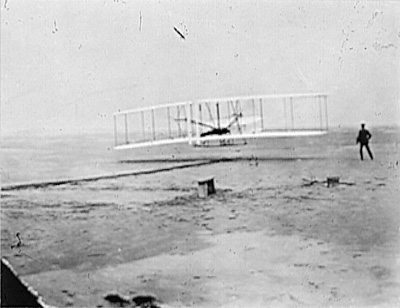




 I recently came across the Quora question,
I recently came across the Quora question, 